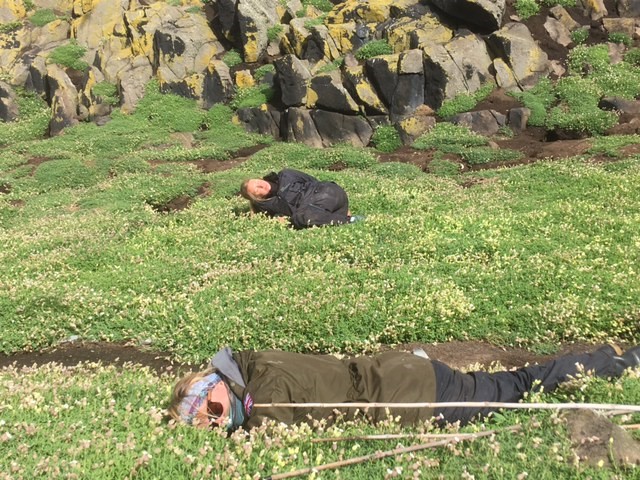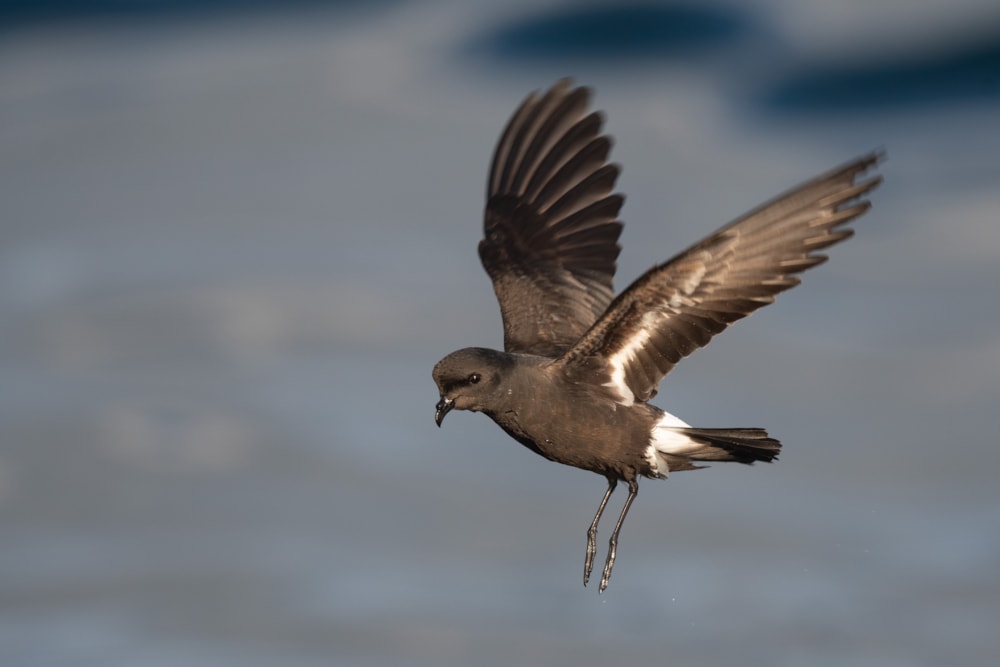European Storm Petrel confirmed as breeding on Isle of May
European Storm Petrel has been confirmed as breeding on the Isle of May for the first time this summer.
NatureScot, the UK Centre for Ecology & Hydrology (UKCEH), and the Isle of May Bird Observatory have suspected there may be a colony on the island, which lies 8 km off the Fife coastline, since 2019, when storm petrels were first noted displaying and calling.
The species is notoriously difficult to monitor due to its nocturnal habits and the team has been using a variety of techniques to survey areas of the island, including playing recordings of the bird's calls over potential nest holes in the hope of eliciting a response. After several efforts a bird was finally heard calling underground during daylight hours in mid-July, when it could only be incubating or brooding a chick.
UKCEH researcher Ella Benninghaus was the lucky individual to confirm with playback the presence of a storm petrel, after smelling the presence of its strong body odour. She said: "Since storm petrels were first detected on the Isle of May in 2019, it has been an exciting but frustrating three years. We carried out some playback surveys with no success last year, but we were determined to try again this year.
"Sure enough, as I was lying on the ground I heard the storm petrel call back to me very quietly. It is a very exciting find and amazing to be able to prove what has been suspected for a few years."

Listening for signs of European Storm Petrel activity underground (Isle of May NNR blog).
On 4 August, the team went one step further when it was announced that a storm petrel chick had been observed. Using thermal image cameras and an endoscope, footage captured showed a freshly hatched fluffy chick. David Steel, Reserve Manager, explained on the Isle of May blog that three pairs had been found, two of which had chicks.
Mark Newell, of UKCEH, said: "To confirm the presence of these mystical, magical birds 200 miles from the nearest known colony is one of the highlights of my many years on the isle."
European Storm Petrels breed in Britain during the summer months but spend their lives out at sea. The vast majority of the population can be found on remote islands, especially in the north and west of Scotland.
David Steel commented: "These special seabirds come ashore under the cover of darkness and nest underground in crevices, burrows, cairns or stone walls. They will raise a single chick before eventually departing once again. During that time their nocturnal activities – singing away in total darkness – and unique smell contribute to make these birds so fascinating and mysterious.
"We're delighted to have confirmation of storm petrel breeding after such a great team effort over the last three years by so many people. The Isle of May National Nature Reserve is hugely significant for its breeding seabird assemblage and this exciting news adds greatly to the importance of this special place."

Adult European Storm Petrels have been noted displaying on the island since 2019, but chicks were finally seen in early August (Steve Baines).
Over the years, volunteers at Scotland's oldest bird observatory on the island have been ringing non-breeding storm petrels and tracking their subsequent movements. Recoveries of ringed birds have shown links to much of the traditional range, mainly to the north and west of Scotland and Ireland.
Alan Lauder, Chair of the Isle of May Bird Observatory Trust, stated: "Such a cryptic species, only visiting land at night, means it can be challenging to find storm petrel breeding colonies, especially where they exist in only small numbers.
"Stormies breeding so far south in the North Sea might suggest other nearby colonies may have gone unnoticed, or perhaps that the feeding conditions in the North Sea are more favourable for them now, despite widespread declines in other seabird species."

